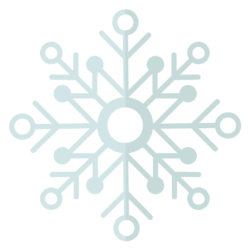By Wild Bill Kelso, PSIA Certified Ski Instructor
It’s snowing… that’s the good news. The bad news is that you can’t see your nose in front of your face. Not to worry. There are a few things you can do to relieve the situation and have fun.
Number one is to plan ahead and bring proper eyewear. Check the mountain weather report so you are prepared for snow and poor visibility. Good goggles with a light color or amber lens are essential gear. The wrong lens (dark color) will make it look like midnight outside. Mirrored lenses are dark as well. Most top brand goggles have two lenses for multiple conditions… one for low light and one for bright sunlight. In Colorado, you can choose from a wide selection of goggles at Outabounds Ski and Board (skioutabounds.com). Sunglasses don’t work when it’s snowing and will allow snow to pelt your eyes.
Next is terrain choice. Waves and bumps are hard to see. Pick a smooth groomed run preferably with glades that have tree islands or tree lined. Trees provide definition to the slope and tell you the pitch and steepness ahead. Wide open bowls are extremely difficult to read. Moguls can be worse. Ski along the edge of run to allow the trees to tell you the pitch and slope. Ski a safe distance from the trees. An accomplished skier or boarder can ski in the tree glades to make visibility a non-issue. Those little trails in and out of the trees on the edge of the run can be a help if you are able.
Follow closely behind your ski buddy if they are comfortable skiing ahead. The skier in front will be your eyes and tell you everything you need to know about the slope. Ask them to ski at a pace that you are capable of. This may be the best way to make it easy. It is obvious but skiing or boarding slower than usual is safer in poor visibility.
Be flexible and loose… you have to absorb the unseen waves and washboards with your lower legs while your upper body glides smoothly. If you are stiff and rigid, the undulations will throw you around and ruin your balance.
Despite the reduced visibility distance, you still have to ski or board with your chin up looking ahead to avoid obstacles. Don’t ski or board with your head down looking at your tips. Use your lower peripheral vision and glance down with your eyes or your head when you need to.
Usually the lower mountain has better visibility than the top. Wear bright colors or a bright helmet so you are easy to see and easy to find on the hill.
Despite the reduced visibility distance, you still have to ski or board with your chin up looking ahead to avoid obstacles. Don’t ski or board with your head down looking at your tips. Use your lower peripheral vision and glance down with your eyes or your head when you need to.
If you like this article, like “Outabounds Ski and Board” on Facebook.
Wild Bill

